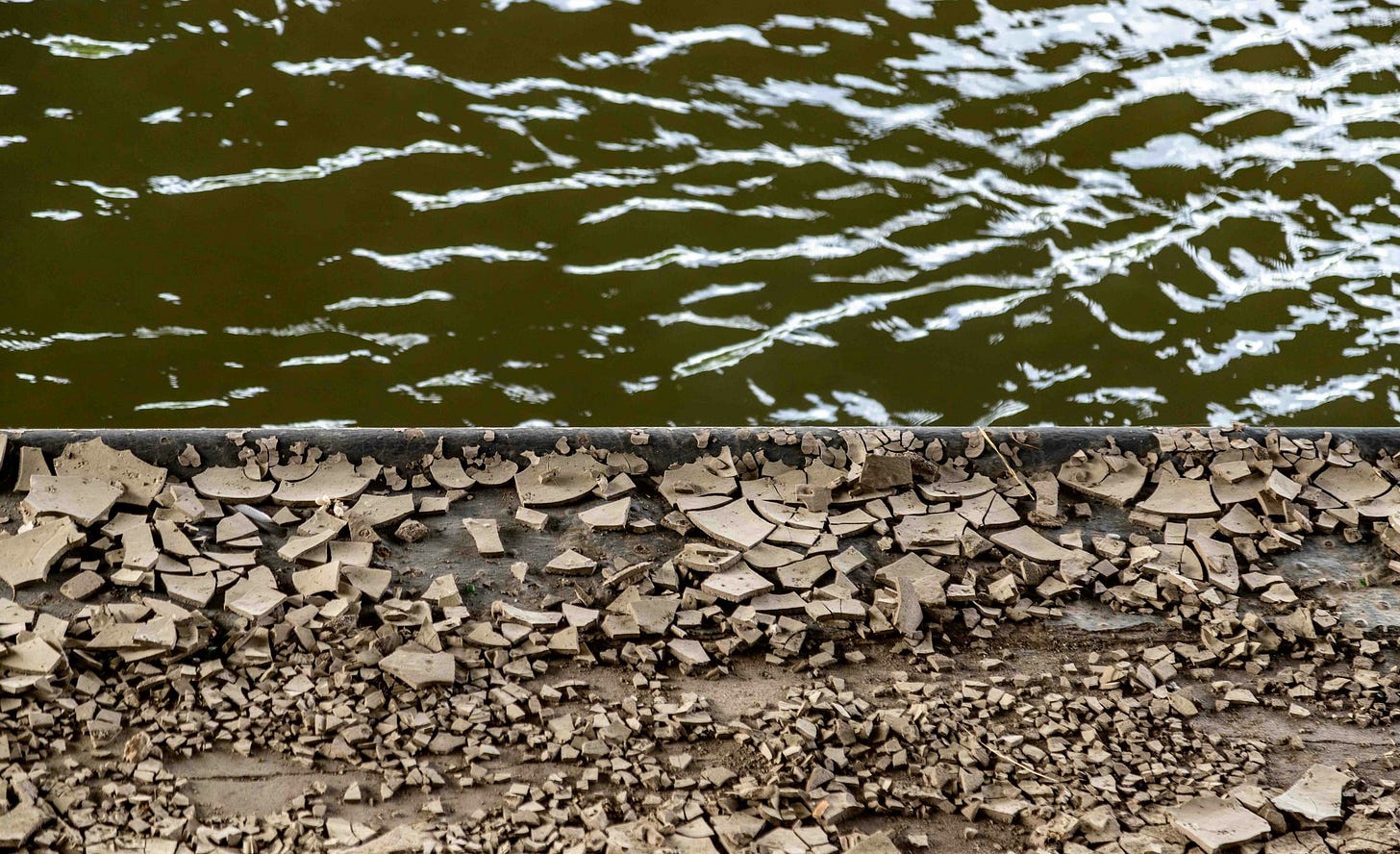“Never to get lost is not to live,” Rebecca Solnit writes in A Field Guide to Getting Lost.
These words, poetic and unyielding, carry new weight in the days following Donald Trump’s inauguration and the cascade of executive orders that followed.
Environmental protections undone. Gender defined in binary terms. Barriers raised higher against immigrants seeking refuge. Each order a detour we, the people, did not choose—a collective stumble into darkness.
But being lost is not just disorientation—it is reckoning. It is the moment when what was familiar dissolves, forcing us to confront who we are without the comfort of a map.
The sweeping executive orders aren’t performative political maneuvers—they are acts of narrative control, and of elimination. To boldly declare who matters, who doesn’t, and who gets to exist within the story of America. Protections and rights for transgender individuals and immigrants are revoked, yes, but more—they are attempts at saying, these lives, these identities, were never valid. There is no place for you here.
But erasure isn’t the same as loss. Erasure is an attempt to obscure, but what is obscured can still be seen if we insist on looking, on being, on celebrating. Solnit reminds us: “To lose oneself is to find oneself.” Even when the narrative shifts against us, the stories we carry—of survival, protest, and resilience—gather force, waiting to be reclaimed.
Identity in Fragments
Sophie Calle found a stranger’s address book on a Paris street. Instead of returning it, she embarked on a provocative investigation: using the names and contact information within, she reached out to people who knew the book’s owner. Of that action, her conceptual art piece, The Address Book , was born—which examines memory, identity, and the ethics of storytelling. Through interviews, she gathered impressions, anecdotes, and observations, piecing together a mosaic of this absent man’s life. The results of which were serialized in 1983 in a French newspaper—each installment adding new dimensions to this collective portrait.
What makes The Address Book so compelling is its layered complexity. It’s not simply a study of the man at its center, but rather an exploration of how people construct narratives about others. Each interview revealed as much about the speaker’s perceptions and biases as it did about the subject himself. In this way, the project underscores the inherent subjectivity of memory, of personal experience, and the fragmented way we carry information in how we understand others through secondhand stories and selective recollections.
Calle’s work raises ethical questions about privacy and the power dynamics of storytelling/truth telling. Is it intrusion, or is it art? Does piecing together someone’s life without their consent give us truth, or only a reflection of our own interpretations? Yet, her project also resonates as an act of reclamation—of refusing to let the lost remain obscured. Each fragment Calle collected, no matter how ordinary, became a meaningful part of a larger narrative.
At its heart, The Address Book reminds us that even when stories feel incomplete or scattered, there is power in gathering the pieces. Calle’s work invites us to see these elements not as irreparable losses but as opportunities to create new understandings, both of others and of ourselves.
Solnit’s Compass
Solnit’s work, too, is about navigating the unknown. In A Field Guide to Getting Lost, she writes about the importance of stepping into disorientation. To get lost, she argues, is to open yourself to discovery. Her essays traverse landscapes both physical and emotional—the deserts of the American West, the hazy terrain of memory, the uncertainties of grief. In each, she explores what it means to inhabit the space between knowing and unknowing.
Her writing challenges us to see that the act of losing our way is not failure but possibility. Solnit writes,
“Leave the door open for the unknown, the door into the dark. That’s where the most important things come from.”
The unknown is where resilience is born. It is where we learn to persevere.
We are lost, as a nation and as a people.
But being lost is not the end—it is the beginning of something new. Solnit’s insistence that getting lost is essential asks us to see this moment for what it is: a turning point. The detours we resist are often the ones that reveal the clearest truths.
To lean into the discomfort of this moment is to acknowledge that the road back won’t be smooth. Finding our way through will require reckoning with the immense damage done, with the stories rewritten, with the people, and lives upended. But it will also require imagination—the ability to see beyond what is lost and into what can still be created.
The inauguration and these early actions of government are a stark reminder of how fragile progress can be. But fragility is not defeat. The executive orders are attempts to dismantle and erase, but what has been taken can be reclaimed and rebuilt—different, stronger, with time. What has been erased can be remembered.
Perseverance in the Face of Erasure
The inauguration marked a disorienting pivot, a reminder of how fragile progress can be. The orders redefining gender as binary, policies targeting immigrants, environmental rollbacks—these are challenges not just to policy but to the fabric of identity and belonging and wellness. They demand perseverance: for us to move forward with patience and intention, to hold fast to what is right even when the way is obscured. To not give up.
Perseverance in the face of erasure is an act of defiance. It is the artist assembling snippets into meaning, the activist uncovering truths hidden in the shadows, the individual refusing to let despair rewrite the story. It is the quiet resolve to piece together what has been broken and imagine something stronger in its place.
To persevere is to see the shadows not as endings but as the beginnings of something new. It asks us to take notes, to remember, to act with humanness—and when the time is right, to rebuild with what remains, to transform loss into momentum, and to create meaning from the fractures.
As Rebecca Solnit teaches us, disorientation can be a gift. The unknown is a landscape filled with possibility—a space where we can reflect and reimagine. The oblique path—the one we didn’t choose—has brought us here. Now it is ours to navigate with courage, to walk forward together, and to shape a future that remembers and reclaims.
Let’s meet in the unknown and make it ours to create.
Actions We Can Take
Bear Witness: Document what is happening. Write letters, keep journals, share stories. The artifacts we create now will be the pieces of truth we glean from as we work to understand, to reflect, to rebuild.
Learn and Educate: Seek out marginalized voices—immigrants, transgender activists, environmental scientists—and amplify their work. Understanding is the first step to resistance.
Support the Vulnerable: Donate to organizations fighting for justice, like the ACLU or local mutual aid groups. Offer your time, resources, or simply your presence.
Create Spaces for Connection: Like Calle’s project, find ways to connect with others. Host conversations, join community groups, build networks that foster resilience.
Imagine Boldly: Follow Jeanette Winterson’s call:
Envision a world where justice thrives and then act as if that world is already possible.






“The sweeping executive orders aren’t performative political maneuvers—they are acts of narrative control, and of elimination.” Yes!
So many great thoughts here, and I appreciate the suggestions too.
“forcing us to confront who we are without the comfort of a map.” While there are many powerful lines in this piece, this one in particular stands out to me. We aren’t on the path so many of us hoped for. And as a nation we are now confronting how much work we still have to do to build a future of justice, safety, equity, stewardship, respect…it can feel so overwhelming. Thank you for this call to seek connection in many forms and in unexpected places. Stories are one of the most important ways to fight erasure. Keep telling yours.